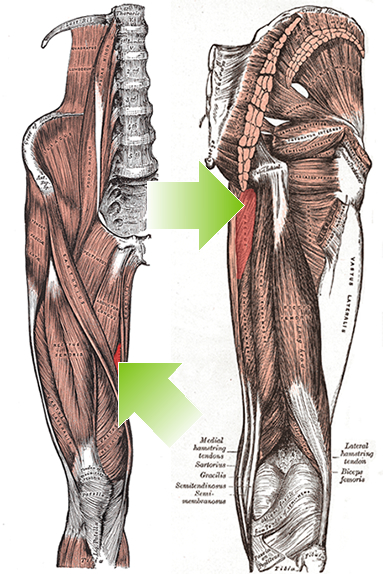Thoughts on the adductor grouping to ponder.
I found this while prepping for the dry needling course I am teaching this weekend and thought you may enjoy it. Though the primary actions of the addcutors are well established, secondary actions (whether they are acually internal or external rotators) remains to be elucidated.
Here is a nice abstract that supports the dynamic function of them as external rotators (eccentrically) during gait.
“Anatomical texts agree on most muscle actions, with a notable exception being the action of the adductors of the hip in the transverse plane. Some texts list an action of the adductor brevis (AB), adductor longus (AL), and/or adductor magnus (AM) as internal rotation, whereas others list an action of external rotation. The purpose of this article is to present a functional model in support of the action of external rotation. Transverse plane motion of the femur at the hip during normal gait is driven by subtalar joint motion during the loading response, terminal stance, and preswing phases. During the loading response, the subtalar joint pronates, and the talus adducts. This talar adduction results in the lower leg, and subsequently the femur, internally rotating. During terminal stance and preswing, the opposite occurs; the subtalar joint supinates as the talus abducts in response to forces generated from the lower extremity and in the forefoot. Electromyographic (EMG) studies indicate varied activity in the AB, AL, and AM during the loading response, terminal stance, and preswing phases of the gait cycle. A careful analysis of EMG activity and kinematics during gait suggests that, in the transverse plane, the adductors may be eccentrically controlling internal rotation of the femur at the hip during the loading response, rather than the previously reported role as concentric internal rotators. In addition, these muscles may also concentrically produce external rotation of the femur at the hip during terminal stance and preswing. Physical therapists should consider this important function of the hip adductors during gait when evaluating a patient and designing an intervention program. Anatomical texts should consider listing the concentric action of external rotation of the femur at the hip as one action of the AB, AL, and AM, particularly when starting from the anatomic position.”
Leighton RD. A functional model to describe the action of the adductor muscles at the hip in the transverse plane.Physiother Theory Pract. 2006 Nov;22(5):251-62.Leighton RD. A functional model to describe the action of the adductor muscles at the hip in the transverse plane.Physiother Theory Pract. 2006 Nov;22(5):251-62.
















